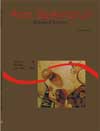Nitrogen and phosphorus levels in the water of rearing red tilapia ponds submitted to different feeding strategies
Abstract
The experiment was carried out in nine tanks, of 42 m2, for 7 months. Males of red tilápia were used with medium weight of 290.64 ± 5.84g, in a density of two fishes/m2. The objective of this work was to evaluate the effect of different alimentary handling (manual, self feeding and mechanical) on the phosphorus and nitrogen concentration in the water of the tanks. The ration contained 28% of protein and 3000kcal of gross energy for ration kg. The design was randomized entirely with three treatments and three repetitions. The averages were compared through tests of Tukey. Temperature was measured daily and, inorganic nutritions and time of residence of the water were measured monthly. The water flow was 0.235 L seg-1 at the beginning of the experiment and later it was reduced to 0.133 L.seg-1, what represented a replenishing time of 1.88 and 3.33 days respectively. Temperature ranged from 18 to 24.67ºC. Nutrient concentrations ranged from: nitrate: 59.12 to 1087.72 µg/L µg L-1; nitrite: 0.08 to 39.53 &mciro;g/L-1; ionized ammonia: 0 to 520.95 micro;g L-1; total phosphorus: 2.87 to 74.74 µg L-1 and orthophosphate: 0 to 23.79 micro;g L-1. The different feeding strategies did not influence water qualityDownloads
Download data is not yet available.
Published
2008-05-09
How to Cite
Baccarin, A. E., Frascá-Scorvo, C. M. D., & Novato, P. F. C. (2008). Nitrogen and phosphorus levels in the water of rearing red tilapia ponds submitted to different feeding strategies. Acta Scientiarum. Biological Sciences, 22, 485-489. https://doi.org/10.4025/actascibiolsci.v22i0.2932
Issue
Section
Biology Sciences
DECLARATION OF ORIGINALITY AND COPYRIGHTS
I Declare that current article is original and has not been submitted for publication, in part or in whole, to any other national or international journal.
The copyrights belong exclusively to the authors. Published content is licensed under Creative Commons Attribution 4.0 (CC BY 4.0) guidelines, which allows sharing (copy and distribution of the material in any medium or format) and adaptation (remix, transform, and build upon the material) for any purpose, even commercially, under the terms of attribution.
Read this link for further information on how to use CC BY 4.0 properly.
0.6
2019CiteScore
31st percentile
Powered by 

0.6
2019CiteScore
31st percentile
Powered by 











1.png)




3.png)













